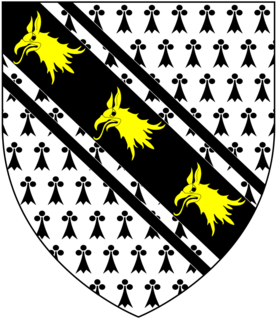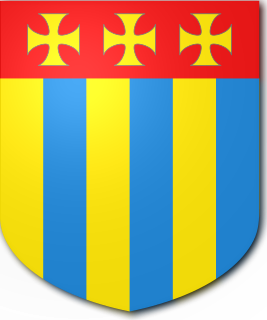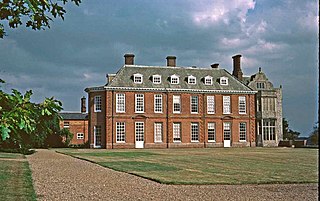
There have been two baronetcies created for persons with the surname Alston, both in the Baronetage of England. Both creations are extinct.
There have been two baronetcies created for people with the surname Heathcote, both in the Baronetage of Great Britain and both created in 1733. The holders of the first creation were later elevated to the peerage as Baron Aveland and Earl of Ancaster, which titles are now extinct. However, both baronetcies are extant as of 2008.
Sir Joseph Ashe, 1st Baronet was an English Whig politician and merchant.
Sir James Ashe, 2nd Baronet was an English baronet and Whig politician who sat in the House of Commons from 1701 to 1705.
There have been six baronetcies created for persons with the surname of Lawson, two in the Baronetage of England and four in the Baronetage of the United Kingdom. Two creations are extant as of 2010.
There have been nine baronetcies created for persons with the surname Lloyd, three in the Baronetage of England, three in the Baronetage of Great Britain and three in the Baronetage of the United Kingdom. Two of the creations are extant as of 2010.

There have been four baronetcies created for persons with the surname Miller, two in the Baronetage of England, one in the Baronetage of Great Britain and one in the Baronetage of the United Kingdom. Two of the creations are extant as of 2008.
There have been four baronetcies created for persons with the surname Rich, two in the Baronetage of England, one in the Baronetage of Great Britain and one in the Baronetage of the United Kingdom. As of 2008 three of the creations are extinct while one is dormant.

There have been four baronetcies created for people with the surname Drake, three in the Baronetage of England and one in the Baronetage of Great Britain.

The Yonge Baronetcy, of Culliton in the County of Devon, was a title in the Baronetage of England. It was created on 26 September 1661 for the merchant and Member of Parliament, John Yonge. He was succeeded by his son Walter, the second Baronet. He was also a Member of Parliament. His son, the third Baronet, sat in the House of Commons for more than a quarter of a century. On his death the title passed to his son, the fourth Baronet. He was also a politician and served as Secretary at War. He is also remembered for his diaries. He was succeeded by his son, the fifth Baronet. Like his father he served as Secretary at War and was also Governor of the Cape Colony. The baronetcy became extinct on his death in 1812.
There have been three baronetcies created for persons with the surname Dryden, one in the Baronetage of England and two in the Baronetage of Great Britain. Two of the creations are extant and are joined under a single holder since 1874.
There have been six baronetcies created for persons with the surname Price, one each in the baronetages of England and of Great Britain and four in the baronetage of the United Kingdom. Two of the creations were extant as of 2008.

The Swale Baronetcy, of Swale Hall in the County of York, was a title in the Baronetage of England. It was created on 21 June 1660 for Solomon Swale, Member of Parliament for Aldborough. The title became either extinct or dormant on the death of the fourth Baronet some time after 1741.

There have been seven baronetcies created for persons with the surname Herbert, three in the Baronetage of England, one in the Baronetage of Ireland and three in the Baronetage of the United Kingdom. All creations are extinct.

There have been four baronetcies created for persons with the surname Martin, one in the Baronetage of England, one in the Baronetage of Great Britain and two in the Baronetage of the United Kingdom. All creations are now extinct.

There have been two baronetcies created for persons with the surname Danvers, one in the Baronetage of England and one in the Baronetage of Great Britain. Both creations are extinct.

There have been two baronetcies created for persons with the surname Meux, one in the Baronetage of England and one in the Baronetage of the United Kingdom. Both are extinct.
There have been four baronetcies created for persons with the surname Bennet, two in the Baronetage of England and two in the Baronetage of Nova Scotia. All four creations are extinct.

Joseph Windham-Ashe of Twickenham, Middlesex, was an English merchant and politician who sat in the House of Commons between 1734 and 1746.

The Stapylton baronetcy, or Stapleton, of Myton in Yorkshire, was created in the Baronetage of England on 22 June 1660 for Henry Stapylton.













